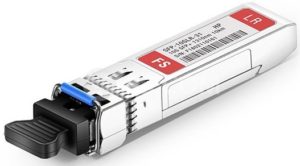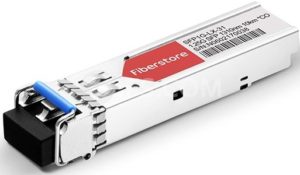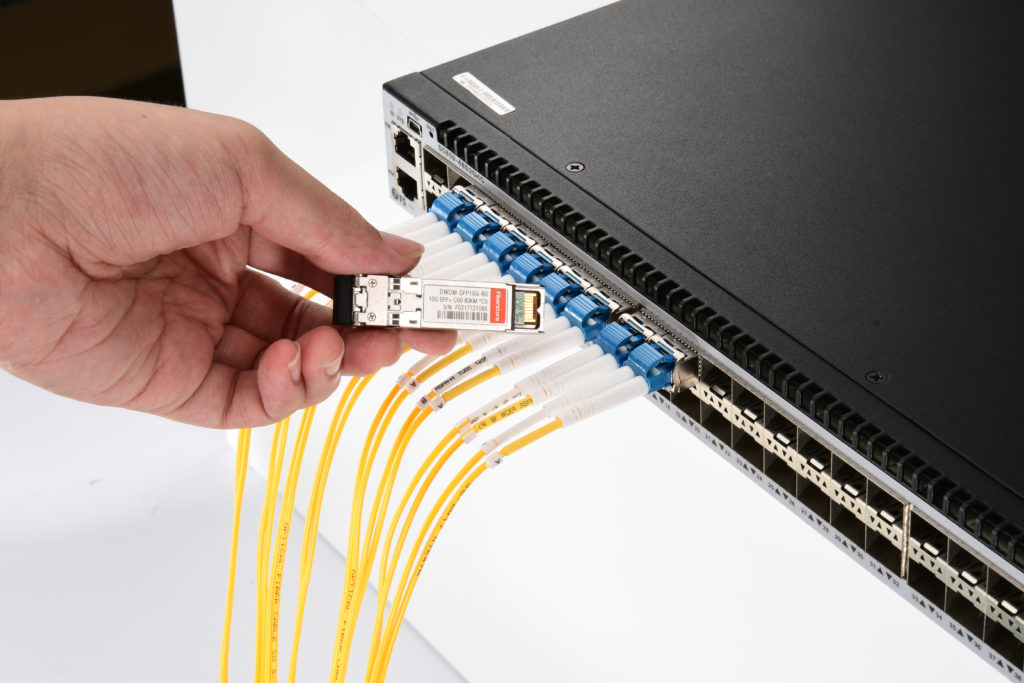With the rapid development of optical communication industry, fiber optic transceivers have been designed smaller and smaller with high diversification to cater for the need of Gigabit Ethernet. As a result, various types of standard for Mini GBIC (SFP, small form-factor pluggable) and SFP+ come out, such as 1000BASE-SX, 1000BASE-LX, 10GBASE-SR and 10GBASE-LR, etc. For these different Gigabit Ethernet standards, do you know the differences among them? 10GBASE-SR vs 1000BASE-SX: the differences have been illustrated before. In this post, the differences of 10GBASE-LR vs 1000BASE-LX will be explained.
As its name implies, 10GBASE-LR is a 10 Gigabit Ethernet standard specified to transmit data over long distance (the letters “LR” refers to “long reach”) through single mode fiber, which is defined in IEEE 802.3 Clause 49. For instance, HPE J9151A 10GBASE-LR SFP+ can reach up to 10 km at a rate of 10.3125 Gbp/s with 1310 nm wavelength, which is widely used in 10GbE, SDH and SONET.
 Figure 1: This photo shows the HPE j9151a 10GBASE-LR SFP+.
Figure 1: This photo shows the HPE j9151a 10GBASE-LR SFP+.
1000BASE-LX is a Gigabit Ethernet standard in IEEE 802.3 Clause 38. 1000BASE-LX SFP rates up to 1.25Gbp/s with a long wavelength laser of 1,270 to 1,355 nm. Different from LR transceiver, LX SFP is available both in single mode and multimode systems, which gives it some advantages in multiple mode application. Although LX SFP is specified to transfer data over a long distance of up to 5 km through single-mode fiber, it also supports multimode fiber system with a maximum reach distance of 550 m. It is noted that for distance over 330 m in multimode fiber, a special launch adjustment patch cable is required to reduce the differential mode delay effect. 1000BASE-LX is frequently used in 1GbE and fiber channel. For Cisco SFP 1000BASE-LX, there are different types and Cisco GLC-LH-SM 1000Base-LX SFP is commonly accepted by end users.
Figure 2: This photo shows the Cisco SFP 1000BASE-LX.
As mentioned above, 10GBASE-LR and 1000BASE-LX both are types of Gigabit Ethernet standards for fiber transceivers. But what are the distinctions? The following table lists the differences of 10GBASE-LR vs 1000BASE-LX.
| 10GBASE-LR SFP | 1000BASE-LX SFP | |
| Data Rate | 10.3125Gbps | 1.25Gbps |
| Form Type | SFP+ | SFP |
| Interface | LC duplex | LC duplex |
| Fiber Type | Single mode | Single mode and multimode |
| Wavelength | 1310 nm | 1270-1355 nm |
| Transmission Distance | 10 km | 5-10 km over single mode fiber; 550 m over multimode fiber |
Although 10GBASE-LR and 1000BASE-LX both support long distance transmission, they are distinct from data rate. The former is applied to 10GbE while the latter is used in 1GbE. Both of them play their own essential roles in different fields and can not be confused with each other.
Comparing and contrasting 10GBASE-LR vs 1000BASE-LX, we find they share some similarities in maximum wavelength and transfer distance, however, they are different Ethernet standards distinct from each other for their data transmission rate, transmission distance and fiber type. Generally speaking, both have their own leading place in the current market, people can say one standard gives an edge over others only under specific circumstance. One decide on which to choose by combining his own need and the characteristics of different standards and types.


